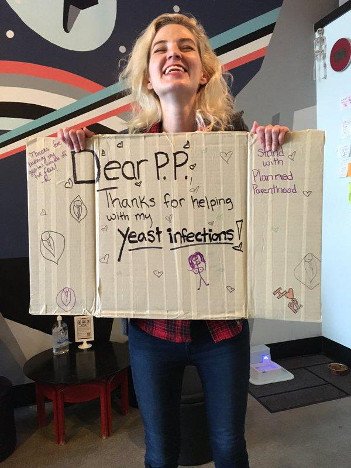One Set Model: Gender & Battling the Medical Community
Author’s note: My apologies for the use of gendered language in this article. I try to keep it gender neutral when possible. Any time I do use gendered language it is a reflection of the data I am relying on.
Women’s bodies have always been a battlefield, both in society and for women themselves. The battle against the regulation of women’s bodies is obvious, as is the battle against the automatic sexualisation of women, and enforced beauty standards. There’s another battle, however, which appears to make the general public squirm. It’s the battle for women to understand their bodies in a world where no one seems to want to talk about them, and the battle to get the medical community to realise that they need to dump their standard model patient.
Women aren’t being educated about their anatomy; an issue which is cleverly highlighted in the Netflix smash hit series Orange Is The New Black, when Sophia educates the other inmates about the intricacies of their downstairs bits. As hilarious as it is to watch, it is also a fairly damning demonstration of how little women know about their own bodies.

Just two years ago, I was flabbergasted to discover that there is a form of “erectile dysfunction for vaginas” called vaginismus. At the moment, medical practitioners estimate that vaginismus occurs in approximately 5 out of 1000 marriages in Ireland, but they admit that the numbers are probably much higher. The figures are startling. As are those which confirm that only 7% of those with vaginas can climax from vaginal penetration. Maybe it’s time we redefined what sexual intercourse means if only one party is getting a kick out of it.
On top of all the problems society has with discussing vaginas, it also recoils in horror when you try to mention anything about the problems that vagina-havers suffer. This was demonstrated last October when the brave and hilarious Mary Numair managed to drive away anti-choice protesters outside a Planned Parenthood clinic in Portland, Oregan by chanting the words “yeast infection” over and over. It is both infuriating and amusing that these protesters looked on in horror at Numair, covering their children’s ears and ushering them away in response to her cries, but had no problem with said children standing around while they chanted about dead babies and called Numair a “whore.”[pullquote]On top of all the problems society has with discussing vaginas, it also recoils in horror when you try to mention anything about the problems that vagina-havers suffer.[/pullquote]
This failure to educate and support people with vaginas doesn’t just stop with reproductive organs. In the past, arguments have been made suggesting that all medical training and research is being carried out on able, white, cis, male bodies. Many studies show that everyone else is systematically ignored or excluded from medical research. That’s why we didn’t know that women have different heart attack symptoms until a couple of years ago.

Because of the focus on this white, able-bodied, male model, there have been no discoveries, investigations or cures for certain afflictions. Vaginal thrush, menorrhagia, polycystic ovary syndrome and fibroids are all common conditions, but their causes remain unknown or only speculated upon, and long term cures have not been found. Most of these conditions can cause chronic pain or discomfort. All can seriously impact your quality of life.
Speaking of chronic pain, that happens to be something which is overwhelmingly experienced by women, and yet, women are still less likely to be taken seriously or given treatment by medical professionals. Add in fibromylgia, which affects eight times as many women as men, as well as lupus (and almost any other autoimmune condition), systemic exertion intolerance disorder (SEID), and iron deficiency anaemia (all of which affect more women than men), and you have well over 25% of childbearing-age women living with chronic pain and tiredness globally.[pullquote]Arguments have been made suggesting that all medical training and research is being carried out on able, white, cis, male bodies. Many studies show that everyone else is systematically ignored or excluded from medical research.[/pullquote]
Even when a doctor is willing to help, they could be in a position where their hands are tied considering most pharmaceuticals go to market without ever having been tested on anyone with a uterus, lest someone get pregnant. Indirect maternal deaths in the UK have almost doubled in the past 20 years, and commentators believe that this is because so little is known about medication risks and benefits to unborn children. This is why, if you get pregnant, your doctor will take you off basically any and all medication you’re taking – not because they know it will have an adverse effect on the foetus, but because they literally have no idea.
Anne Drapkin Lyerly (associate director of the Center for Bioethics at the University of North Carolina) and Ruth Faden, (the director of the John Hopkins Berman Institute of Bioethics) are the founders of the Second Wave Initiative – a project that promotes the responsible inclusion of pregnant people in biomedical research. They argue that pregnant people are often seen as just vessels, with their own health regarded as secondary to the health of their unborn child.

The obsession with the white, cis male as a set model patient is so severe that, in many cases, those with uteruses are routinely told that their diseases and disorders aren’t disorders at all, and are just a normal part of having a womb. There are numerous stories of women suffering debilitating menstrual cramps leaving them paralyzed and vomiting with pain, only to have medical practitioners tell them that they are “fine.” In many cases, they later discover that there is, indeed, a medical issue which should have been recognised.
For years, menstrual pain has been considered an unavoidable evil, with women everywhere accepting that once a month they would be crippled with agony. In a recent article for the Guardian, one woman wrote that her GP had told her she was exaggerating how painful her cramps were, while another with endometriosis had been told by her mother that the overwhelming pain was “normal.”
Because those experiencing cramps are expected to suffer through it in silence, they open themselves up to danger. Roughly one-third of women reported that they have experienced chronic pelvic pain that has gone untreated for 6 months or longer, which is indicative of a serious underlying condition. Dr. Barbara McGuirk is firm when she says that
If women require Midol, Pamprin, hot water bottles, sitting on cold tile floors, staying home from school or work, and/or (are) balled up in a fetal position to find relief, there is nothing normal about any of these things. Women experiencing these symptoms should see a women’s health specialist as soon as possible.
I think I speak for a lot of cramp sufferers when I say “Nothing normal? Try bloody routine, mate.”
Many drugs are pulled off the market after anyone who isn’t a white cis male demonstrates side effects. Indeed, we have only recently discovered that men and women react differently to psychotropic drugs, with women between 50 and 75 percent more likely to experience side effects. This has been such a problem throughout history that it has resulted in the deaths of thousands of people, and groups holding sit-ins and hunger strikes in order to get the FDA to finally improve their testing and safety measures.
It’s time the medical community sat down and did a bit of an information overhaul, and started focusing on people who fall outside of their set model patient.
Images via pinterest.com
